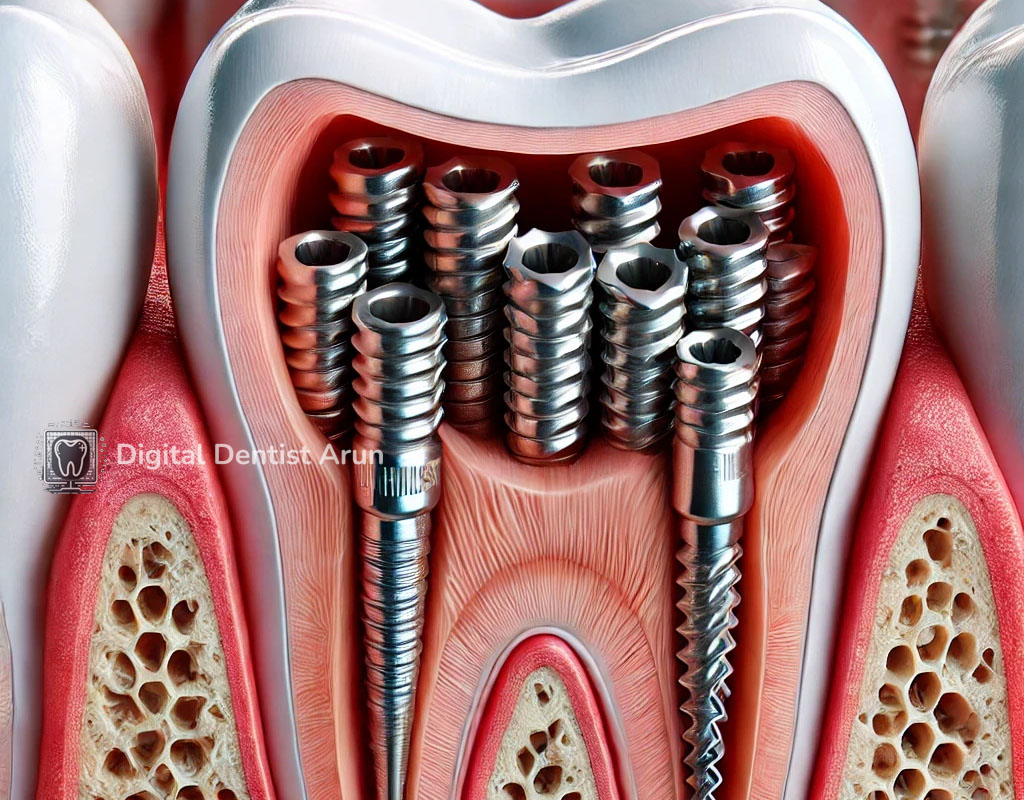Root canal therapy, also known as endodontic treatment, relies heavily on irrigants to ensure the cleanliness and disinfection of the intricate root canal system. While synthetic chemical irrigants like sodium hypochlorite and EDTA have been the standard in modern dentistry, their potential risks, including cytotoxicity, allergic reactions, and the weakening of dentin, have led to the exploration of safer, natural alternatives. This has led to the rising interest in herbal irrigants, which offer biocompatibility, antimicrobial effects, and minimal impact on dentin hardness.
Why Are Herbal Irrigants Important?
Herbal irrigants are gaining traction due to their ability to deliver antimicrobial properties without the risks associated with synthetic chemicals. Unlike their synthetic counterparts, herbal irrigants are natural, non-toxic, and biocompatible, making them ideal for patients who are sensitive to chemical treatments. Additionally, these natural solutions are derived from plants and have been used in traditional medicine for centuries.

Commonly Used Herbal Irrigants
Several herbal extracts have shown promise in root canal therapy. Below are some of the most popular herbal irrigants currently in use.
1. Neem (Azadirachta indica)
Neem is renowned for its potent antimicrobial, antifungal, and anti-inflammatory properties. Used in traditional medicine for centuries, neem extract is effective in eliminating bacteria from the root canal, particularly resistant strains such as Enterococcus faecalis. Unlike sodium hypochlorite, neem does not negatively affect dentin hardness, making it a safer alternative for long-term dental health. It is particularly beneficial for patients with sensitivity to synthetic chemicals.
2. Green Tea (Camellia sinensis)
Green tea extract contains polyphenols like epigallocatechin gallate (EGCG), known for their antimicrobial and antioxidant properties. These compounds make green tea an effective irrigant in reducing bacterial presence within the root canal. Studies have shown that green tea can effectively inhibit the growth of Streptococcus mutans, a common bacteria associated with dental decay. Its biocompatibility ensures that it enhances healing post-treatment without compromising the tooth structure.
3. Triphala
A staple in Ayurvedic medicine, Triphala is a blend of three fruits: Terminalia chebula, Terminalia bellerica, and Emblica officinalis. Triphala is recognized for its broad-spectrum antimicrobial activity and is particularly effective against Enterococcus faecalis. Beyond its antimicrobial properties, Triphala also acts as an antioxidant and is gentle on dentin, preserving the structural integrity of the tooth.
4. Propolis
Propolis, a resinous substance produced by bees, has been shown to possess antimicrobial and anti-inflammatory properties. Research indicates that propolis is effective in reducing bacterial colonies in the root canal, and it contains bioactive compounds such as flavonoids and phenolic acids, which help in enhancing the healing of periapical tissues after endodontic treatment. Propolis offers a natural alternative to traditional chemical irrigants without compromising disinfection efficacy.
Benefits of Herbal Irrigants Over Synthetic Chemicals
The shift toward herbal irrigants is driven by several key advantages:
- Biocompatibility: Unlike synthetic irrigants like sodium hypochlorite, which can cause cytotoxicity and allergic reactions, herbal irrigants such as neem and propolis are natural and non-toxic. This makes them suitable for a wider range of patients, including those with chemical sensitivities.
- Preservation of Dentin: Herbal irrigants, particularly Triphala and green tea, have minimal impact on dentin hardness. In contrast, prolonged exposure to sodium hypochlorite can weaken dentin, compromising the structural integrity of the tooth. Herbal irrigants offer effective disinfection while preserving tooth strength.
- Antimicrobial Efficacy: Despite their natural origin, herbal irrigants are highly effective against a wide range of bacteria, including resistant strains such as Enterococcus faecalis. Their broad-spectrum antimicrobial properties ensure that they are just as effective as their chemical counterparts in preventing infection during root canal therapy.
- Cost-Effective and Accessible: Herbal irrigants are often more affordable than synthetic chemicals, making them an attractive option in resource-limited settings or in regions where traditional medicine is practiced. This cost-effectiveness does not compromise their efficacy, making them a practical choice for many dental professionals.
Challenges and Future Research
While herbal irrigants offer numerous benefits, some challenges remain. One of the primary issues is the lack of standardization in formulations. Unlike commercially available chemical irrigants, herbal extracts can vary in composition depending on the source of the plants, the method of extraction, and storage conditions. Further research is needed to develop standardized protocols for the use of herbal irrigants in everyday dental practice.
Additionally, while studies have shown the efficacy of herbal irrigants in lab settings, more clinical trials are necessary to establish their long-term safety and effectiveness compared to conventional treatments. Further research will help to address these challenges and refine their use in endodontics, potentially making herbal irrigants a mainstream solution in dental care.
Conclusion
Herbal irrigants provide a safer, biocompatible, and effective alternative to traditional chemical irrigants used in root canal therapy. Neem, green tea, Triphala, and propolis are just a few of the natural solutions that offer antimicrobial effects without the associated risks of synthetic chemicals. By preserving dentin hardness, reducing cytotoxicity, and offering cost-effective options, herbal irrigants are becoming an integral part of modern endodontics.
As research continues, standardized formulations and clinical protocols will be developed, ensuring that herbal irrigants can be seamlessly integrated into routine dental practice, providing both patients and practitioners with a natural, safe, and effective solution for root canal disinfection.

